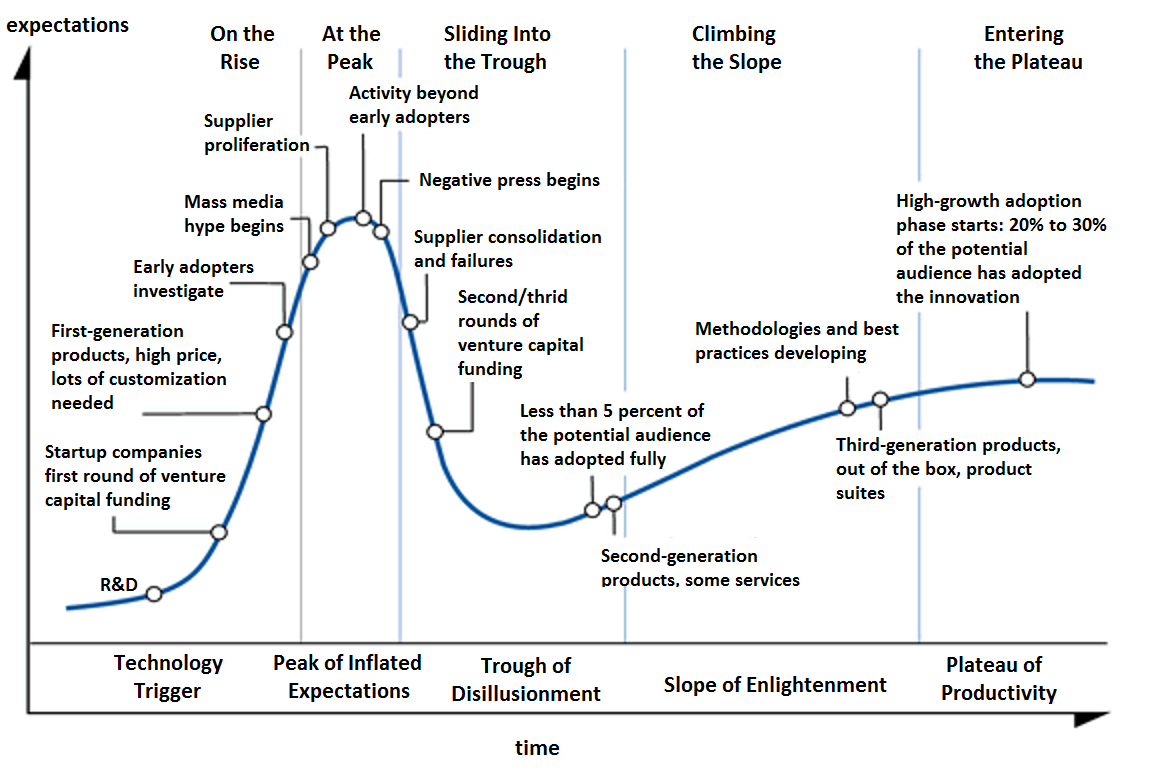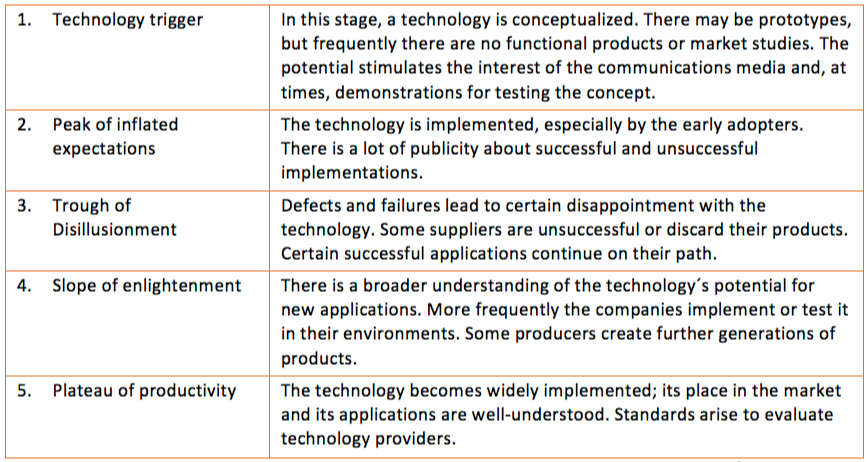

The story assumes that all stakeholders’ perception of a technology is the same: entrepreneurs, incumbents, governments, investors, NGOs, etc. The y-axis definition is vague but relates to “visibility” (which can be quantified) or “expectations” (which can’t). However, time is not quantified and equal lengths on the x-axis may be wildly differing lengths of time. The hype cycle is framed in terms of perception and adoption evolving over time.

All the uncertainties about technical feasibility, scalability and performance, regulatory context, funding and cash flow, customer acceptance, and so on, are hidden. Other players like the media, producers, and the market are mere context. A technology is the protagonist, and there are no antagonists.

Criteria for assessing provider viability are more clearly defined. Plateau of Productivity: Mainstream adoption starts to take off.Slope of Enlightenment: More instances of how the technology creates real-world benefits start to crystallize and become more widely understood.Trough of Disillusionment: Interest wanes as experiments and implementations fail to deliver.Peak of Inflated Expectations: Early press produces stories of success – often accompanied by scores of failures.Innovation Trigger: A potential technology breakthrough kicks things off.The hype cycle is based on the notion that all technologies move steadily through a fixed series of stages, “the five key phases of a technology’s life cycle.” Here’s a Gartner phase summary: It’s a story (more accurately, a trope) that meets my know/believe/act criterion for myth. Most people in business know about Gartner’s hype cycle, many of them believe it, and some act on it, for example through corporate investment decisions and buying Gartner’s services.


 0 kommentar(er)
0 kommentar(er)
